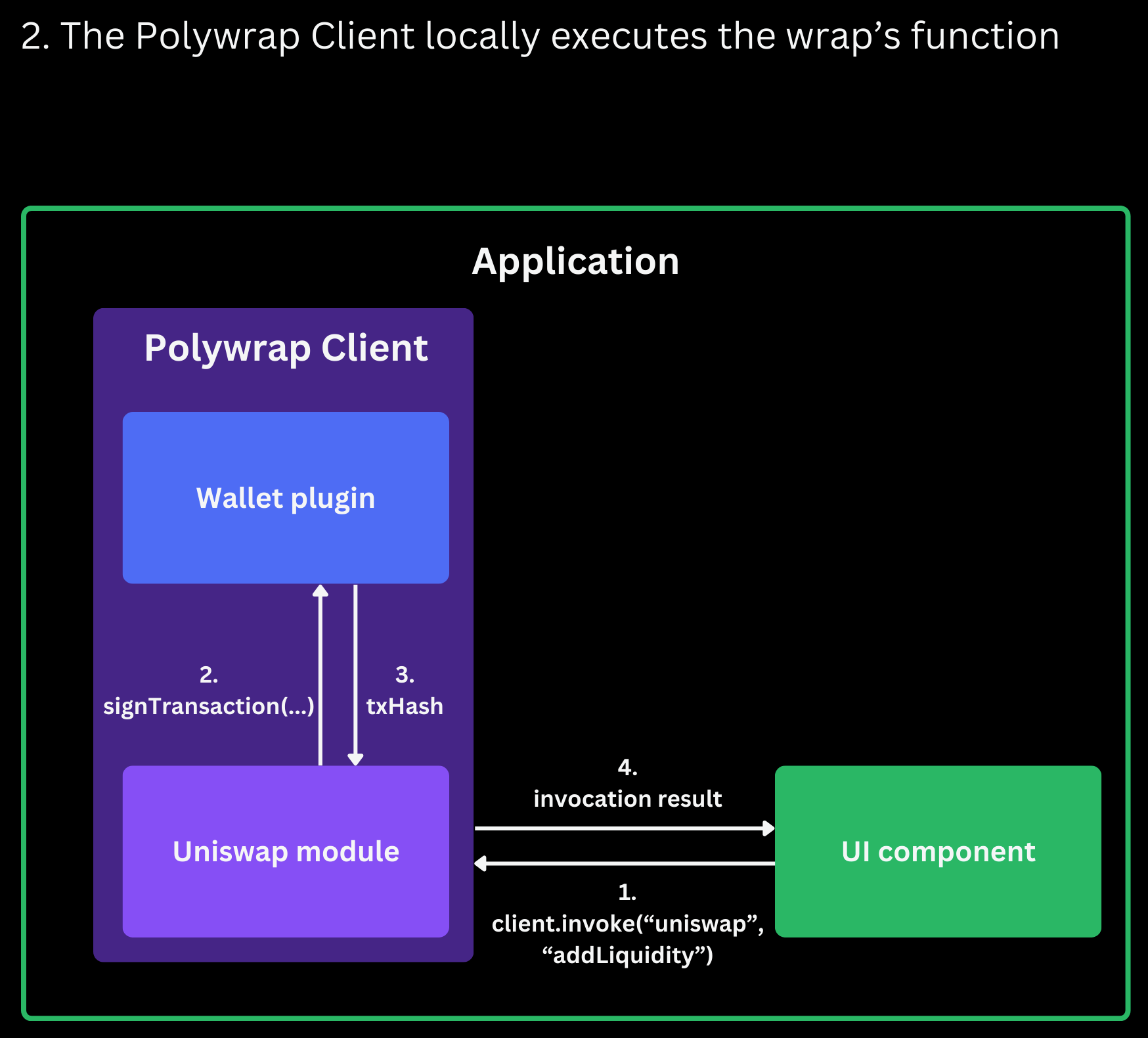FAQ
What is Polywrap?
Polywrap is a framework for portable and composable SDKs. Polywrap calls these SDKs “wraps”.
Wraps are WebAssembly (Wasm) modules with superpowers--every wrap contains auto-generated, standardized bindings that enable communication between modules and a host language. The Wasm modules are fully composable, meaning any two wraps can call each others' methods even when their source codes were written in different languages.
When used with any Polywrap Client written for any host language, all the effort involved in marshaling data between the host language and the Wasm module is handled for you, automagically. The Polywrap client handles invocations between the user and Wasm modules, and also between the modules when the modules invoke each other.
Polywrap abstracts away the complexity, providing users a seamless user experience that closely resembles the native experience of their favorite high-level programming language.
What are wraps?
Wraps are simply WebAssembly binaries built with Polywrap and packaged with specific metadata that allows clients to run them.
How are wraps run?
Wraps are run by clients. Clients will fetch a wrap and execute it locally in the context of the application. Clients exist in a variety of languages: JavaScript, Rust, Python, etc.
How does this execution happen?
In a nutshell, wrap execution follows these steps:
- The application requests the execution of a wrap
- Internally, the client:
- Fetches the requested wrap
- Executes the wrap's function inside a WebAssembly runtime
- The client returns the result of the wrap's function call back to the application
Or, if you prefer diagrams:


Where do wraps come from?
Wraps can be bundled with the application, or loaded from external sources: file storage, the Internet, you name it. Clients allows developers to configure this.
Who/what can use wraps?
Wraps are used within apps and other wraps. They are defined via their metadata, which allows apps to integrate wraps, and wraps to import other wraps.
Why wraps?
- Wraps can run and live anywhere:
- Clients exist in many languages.
- Wraps can be bundled with apps or downloaded when needed.
- Wraps can call other wraps:
- Wrap metadata is imported at built-time.
- Wrap code is executed at run-time.
- Wraps help secure your app:
- They execute in a secure WebAssembly environment.
- They don't have direct access to their host environment.
How do I access host capabilities?
Polywrap has a plugin system that enables application developers to allow access to host capabilities. Wraps can call host functions defined in plugins. Plugins are also infused with Polywrap superpowers--bindings that allow them to appear to the Polywrap client and be invoked just like a wrap.
Unlike wraps, plugins are not portable. Plugins are written in a Polywrap Client's native language and must be registered with the client at runtime.
Can I write my own plugins?
Yes, you can write any host capabilities you need as plugins in your application’s language. Polywrap also provides a set of basic plugins out-of-the-box:
- Filesystem
- HTTP/S
- Ethereum wallet connection
- Logging
How should I get started?
To execute your first wrap, follow one of our Quick Start guides: